
 |
|
|
|
|
|
Devonian Shale
Facies |
|
| The Sonyea Group is a thin
stratigraphic slice of the Devonian Catskill Delta Complex. We
studied it because the internal stratigraphy was well understood,
and prior studies had examined the interbedded sandstones and the
paleoecology of infaunal and epifaunal brachiopods. In order to
study how Paleozoic shale facies compares to that in the Proterozoic,
this seemed a
perfect framework for the study of lateral variability of shale facies along an onshore-offshore transect.
The details of this study were published in JSR:
Schieber, J., 1999, Distribution and deposition of mudstone facies in the Upper Devonian Sonyea Group of New York. Journal of Sedimentary Research, v. 69, p. 909-925. download PDF file (left click on link and click on "Save as"...) |
|
| The Sonyea Group outcrops in upstate New York. It is sandwiched by two transgressive black shales, and thins dramatically from basin margin to basin center. |
 |
| On the basis of small scale sedimentary features (visible at hand-specimen and thin section scale), six onshore-offshore facies belts with multiple shale types were distinguished. Distinct sets of physical and biological parameters characterize each facies belt. |
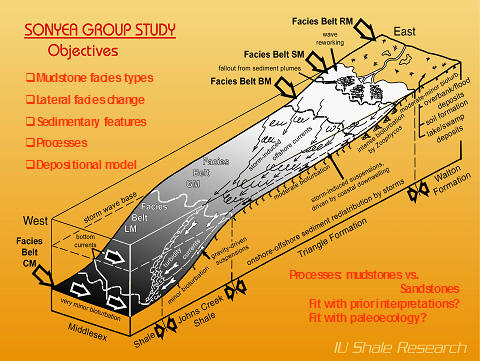 |
| Facies belt RM (red mudstones) comprises the coastal plain and consists of mostly red colored mudstones deposited in association with laterally migrating and aggrading rivers. |
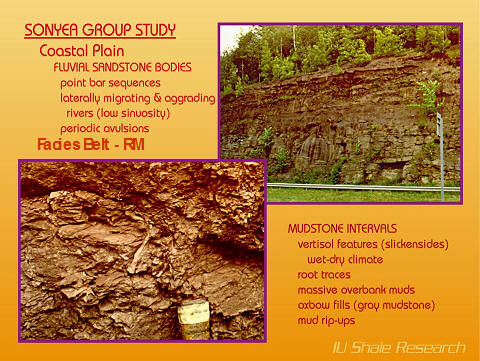 |
| Mottled red mudstones with root traces are vertisols that reflect alternating wet-dry climate. Faintly banded and laminated-rooted red mudstones were the results of overbank deposition. Gray mudstones characterize oxbow lake infills. Mudstone conglomerates record energetic floods that reworked dried out mudcrusts. |
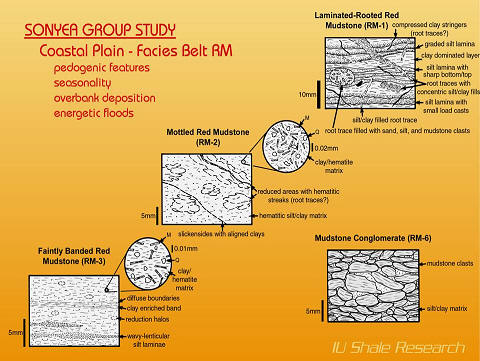 |
| Nearshore mudstones commonly have silty/sandy laminae (SM, sandy mudstone facies), show deep scours filled with more mudstone, and are becoming increasingly bioturbated in offshore direction (BM, bioturbated mudstone facies). |
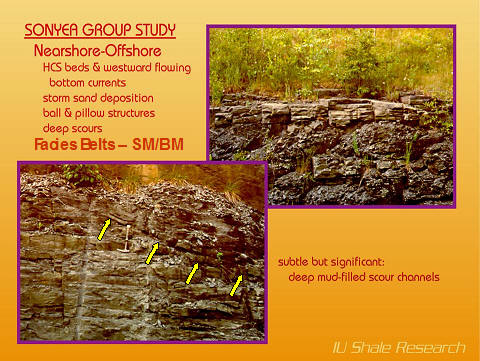 |
| Sandy mudstones show evidence of fall-out from rover plumes, wave and current reworking, moderate bioturbation (simple tubes), and sand event deposits (tempestites). In bioturbated mudstones evidence of physical sedimentation processes has been largely (but not entirely) obliterated. Strongly compacted Zoophycus burrows can impart a secondary "pseudo"-laminated texture. |
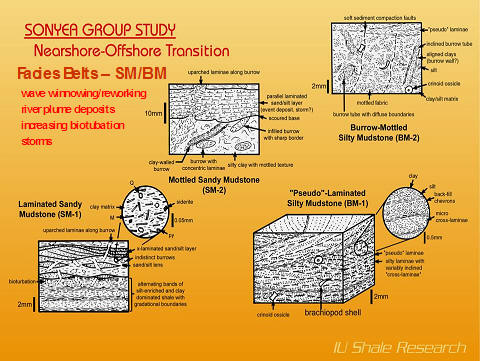 |
| Moving further basinwards, offshore sediment transport during storms built up a subaqueous platform with well developed HCS storm sands. The interbedded with gray shales/mudstones (facies belt GM) carry a combined imprint of storm deposition and fair weather bioturbation. |
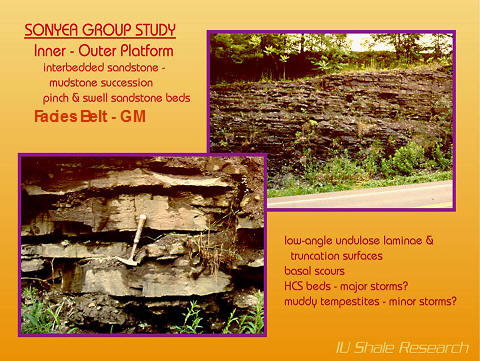 |
| Severely bioturbated gray mudstones that only show traces of prior physical processes are interbedded (at the dm-scale) with mudstones that show variably preserved graded silt/clay couplets that are very similar to modern muddy storm deposits. These couplets are interpreted as reflection of more frequent weaker storms, whereas the HCS beds were produced by exceptionally strong storms. |
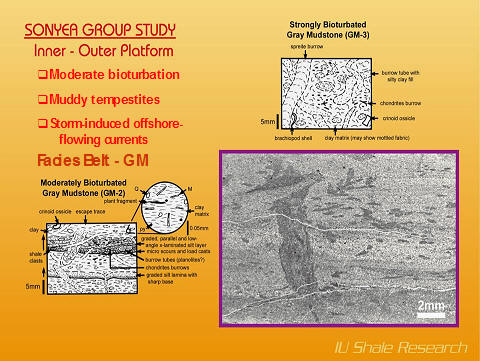 |
| Seaward of this storm produced platform, the bottom slope increased toward the basin center. Density currents transported fine sediment down this slope into the deepest portions of the basin where the most slowly deposited carbonaceous mudstones accumulated. |
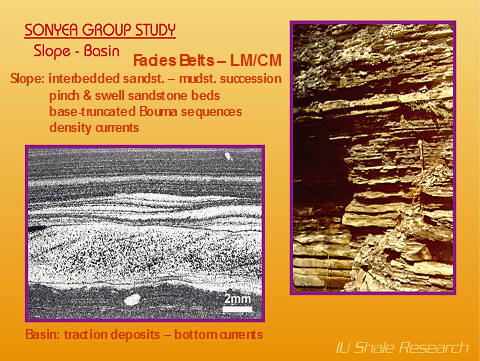 |
| In the slope facies prominent lamination was produced by deposition of fine-grained turbidites. At the basin floor bottom currents produced silt laminae in the organic matter-rich background sediment. Although bioturbation is minor, abundant benthic fecal pellets indicate that the very watery/soupy surface sediments were inhabited by worms, probably polychaetes with tolerance for low oxygen conditions. |
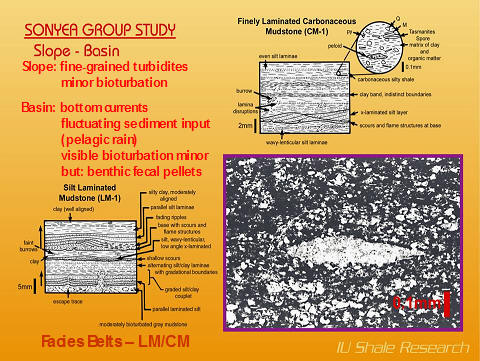 |
| Comparing with information gleaned from sandstone beds and paleoecology, we find that the mudstones not only match what we learned in prior studies, but allow considerable refinement of environmental assessment. |
 |
| When compared to studies of unbioturbated Proterozoic shales, bioturbated shales provide much of the information on physical processes, and yield further information through interpretation of burrow features. |
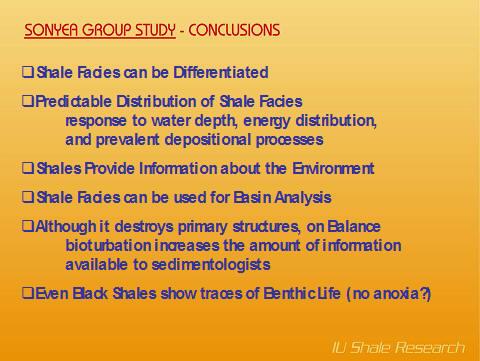 |
|
|
|
| Back to SHALE RESEARCH LAB Main Page | |
| Back to IU Department of Geological Sciences | |
|
© Jürgen Schieber, IU Bloomington Department of
Geosciences Last updated: February 08, 2022. |
|